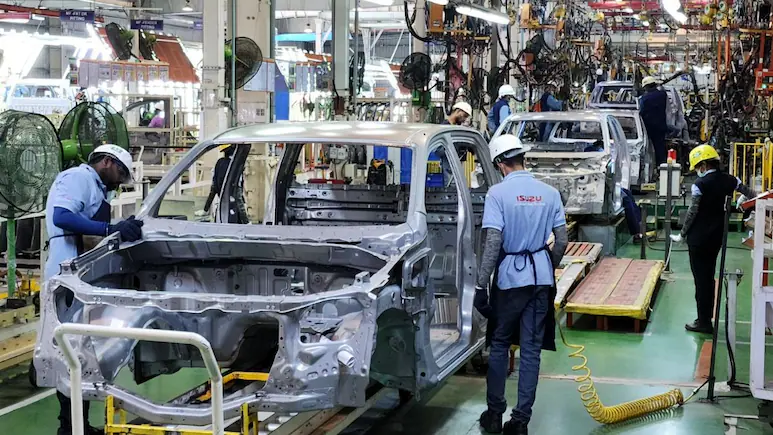New GST Overhaul Promises Price Reductions Across Multiple Sectors including Consumer Electronics
New Delhi – A major restructuring of the Goods and Services Tax (GST) framework in India is on the horizon, with Prime Minister Narendra Modi recently describing it as a “next-generation” initiative in his Independence Day address. This transformative move is expected to significantly reduce prices of various daily-use items, while simultaneously simplifying the taxation framework by cutting down on the number of tax brackets for different goods.
The proposed changes aim to alleviate the financial burden on consumers by potentially slashing the GST rates for a majority of commonly purchased goods. Sources indicate that the government is planning to consolidate the existing tax brackets, with specific focus on reducing the burden of 28% and 12% GST currently imposed on a multitude of products. This revised structure is expected to streamline the taxation process, while boosting overall consumption in the economy.
The government is reportedly considering dropping approximately 90% of goods currently subjected to the high 28% GST bracket down to the 18% category. Furthermore, items taxed at 12% may also be recategorized, moving them into a lower 5% bracket. This reduction is anticipated to encompass a variety of daily-use products, ranging from household items to essential technology, thereby benefiting a wide segment of the population.
What Changes Can We Expect and Who Will Benefit?
As part of this efficient overhaul, consumers may see a noticeable decrease in prices for a variety of essential goods. Although specific details are still under discussion, sources suggest that this could include items such as toothpaste, bicycles, and small appliances like sewing machines and pressure cookers. The government is also eyeing reductions for mobile phones and computers, which are increasingly becoming necessities in today’s digitally-driven world.
Moreover, daily-use items like hair oil, processed food, and essential stationery items for school children, including notebooks and geometry boxes, are likely to fall under the lower GST rates, making them more affordable for families across the nation. The scope of these changes is vast and aims to elevate living standards by making essential goods readily accessible.
While the benefits for everyday consumers are clear, the upcoming GST restructuring is also designed to stimulate economic growth. The revised approach is expected to counterbalance potential revenue losses, estimated at around Rs 50,000 crore, by encouraging greater consumption, which in turn may uplift various sectors of the economy.
Which Goods Will Experience Lower Taxes? A Detailed Breakdown
Among the goods expected to see tax reductions are bicycles, ready-made garments priced over Rs 1,000, and footwear falling between Rs 500 and Rs 1,000. Additionally, certain agricultural tools and essential medical items, including vaccines, are anticipated to qualify for lower GST rates under this new structure.
The 18% tax slab is likely to feature consumer electronics, such as televisions, refrigerators, air conditioners, and washing machines. The anticipated changes aim to offer relief not just to the average consumer but also to industries reliant on these products, potentially invigorating growth in sectors that are crucial for the economy.
When it comes to the automotive sector, the current taxation landscape is notably complex. Passenger vehicles presently carry a hefty GST of 28%, supplemented by compensation cess that can reach as high as 22% based on engine size and type. Electric cars, however, enjoy a much lower rate of 5%, without any additional cess. Under the revised GST framework, it is expected that both passenger vehicles and two-wheelers will be slashed from the 28% tax bracket to a far more reasonable 18%. This shift will make purchasing cars and bikes considerably more affordable, injecting vitality into a sector that has faced declining sales in recent months.
The auto industry has already begun to respond positively to these prospects, as evidenced by an uptick in the Nifty Auto index, which surged 4.61% on Monday in reaction to expectations surrounding the anticipated GST reforms.
Navigating the Economic Landscape
The GST overhaul is poised not only to benefit consumers directly but also to bolster economic growth substantially. Following a significant acknowledgment from global rating agency Standard and Poor’s, which upgraded India’s credit rating for the first time in nearly 20 years, the anticipation surrounding these reforms is heightened. The agency recognized the government’s efforts toward fiscal responsibility and the potential for favorable long-term growth parameters.
The GST Council is expected to finalize these proposed changes during their upcoming meeting in September. Further confirmation of specific items that will undergo tax reductions will emerge afterward, along with a detailed list outlining the new GST structure.
Looking Forward: The Future of India’s GST
As we await confirmation from the GST Council, the promise of lower taxation on a broad array of goods offers a glimpse into a more consumer-friendly economic landscape in India. By focusing on affordability and accessibility, the government aims to cultivate an environment conducive to growth and increased purchasing power among the populace.
In a world where expenses for essential items have been on the rise, these proposed reforms could serve as a much-needed relief for families across the nation. Not only will this impact everyday spending, but it could also enhance overall economic productivity by stimulating demand across several sectors.
For further information on GST reforms and related economic changes, visit our detailed articles on the implications of the GST overhaul and understand how it may reshape consumer behavior in India.
Learn more about the potential impacts of the upcoming GST changes(https://www.ndtv.com) and stay tuned for updates as they unfold on credible platforms like[The Economic Times](https://economictimes.indiatimes.com).
DISCLAIMER
We have taken every measure to ensure that the information in this article and on our social media platforms is accurate, verified, and obtained from reliable sources. For feedback or complaints, please contact us at info@hamslive.com.


